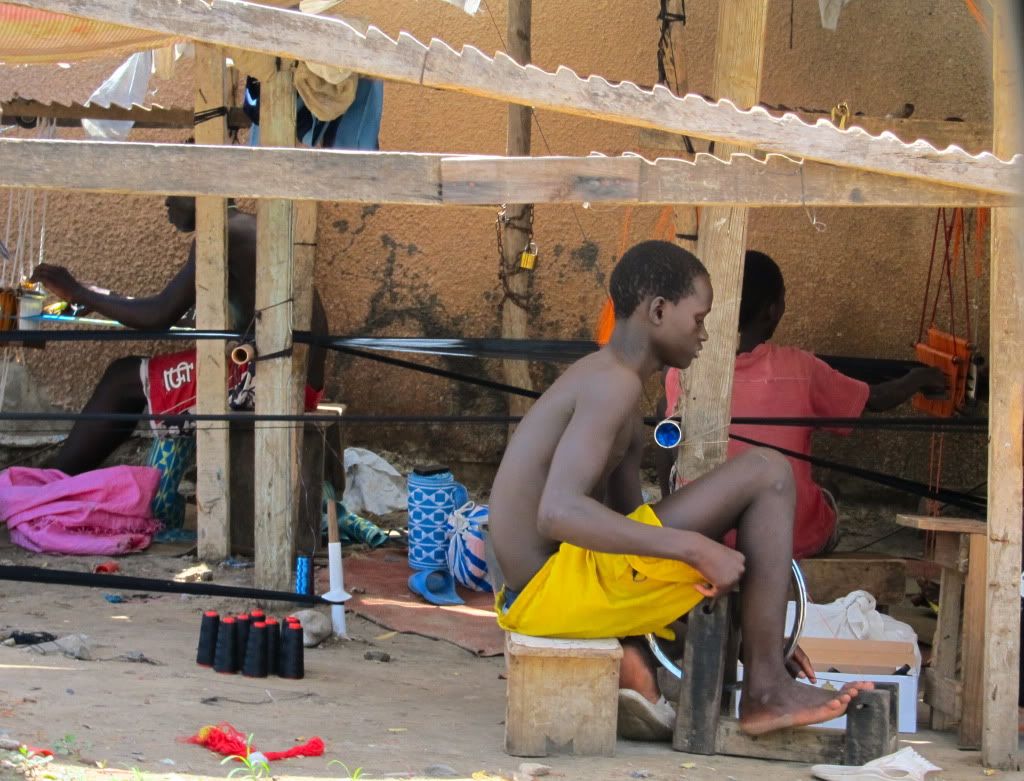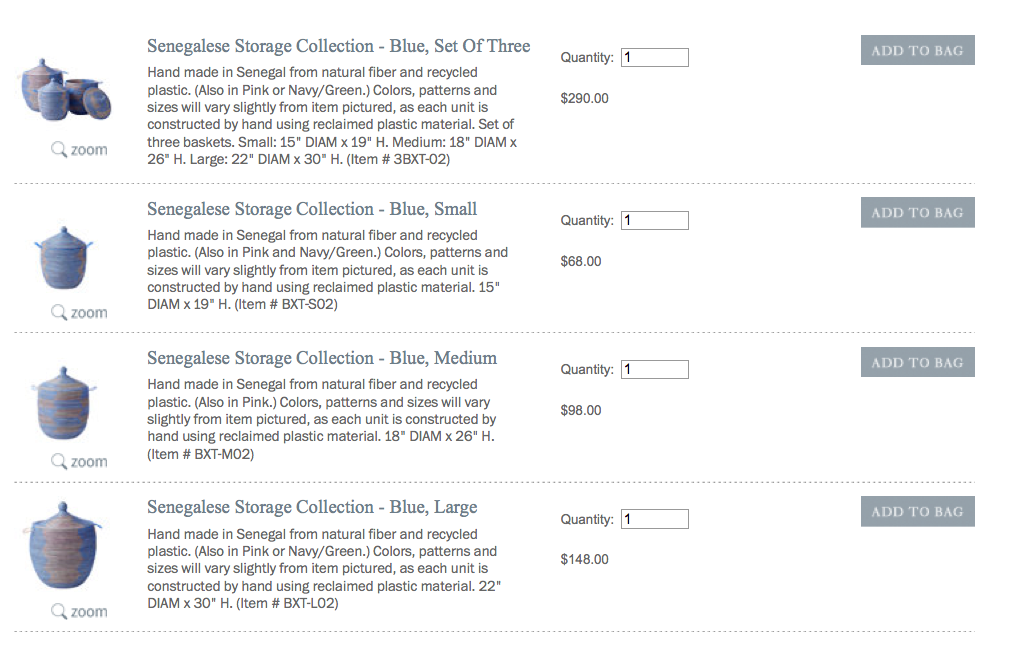Check out my latest and greatest custom-made treasure from Dakar (courtesy of the
super-sympa Babacar, who has a boutique that I have blogged about
here). I brought him a bunch of empty soda cans- one of which that I hand-carried back from Morocco (I wanted the World Cup logo on it). I told him my design vision for a serving tray, and two weeks and ten dollars later it is sitting in my house.
As in most other parts of the world, there are many unique things to buy here in Senegal (I say “most other parts” because I don’t think I ever saw anything interesting in Brunei). As you wander the streets and market stalls, all items can be had for a negotiated price that is inversely proportional to your bargaining prowess and amount of available time to waste BSing with the seller.
So grab a seat in the plastic chair that they’ve just offered you and réfléchissez a bit before deciding how much you’d like to pay for that batik tablecloth checkered with elephants…
I’d say that each time I go out and shop, I do a fair job of negotiating a reasonably-priced transaction. Ever-mindful of the reality that I will always pay “le prix toubab” for Senegalese wares, I base my negotiations on how much I would like to pay. A good rule of thumb in bargaining is a mix between “Pay at most 50% of what they are asking” and “Decide how much it is worth to you and work with that sum”. Not exactly a scientific process, but that’s how the game is played.
Here are a couple of things that I have picked up in Senegal over the past 20 months. When considering a purchase, I try to mentally remove the item from its shelf of similarly-designed objects and imagine whether it would actually “go” in a house that is nowhere near Africa.
As I’ve said,
I
know that I’m not paying rock-bottom prices for the things that I buy here- and for the most part I am okay with that. Still, I do find myself bracing for any potential swindling by an opportunistic merchant (I’m talking to
you, Mr. Taximan). No one likes to be ripped off- not even the Senegalese. Which kind had me thinking this morning…
You see in the picture above the two beautiful multi-colored baskets? I think I purchased the big one for less than 15 bucks on the side of the road a few months back. You can find these guys for sale in many places around Dakar and Thiès, and they truly count as a locally-made item that is sure to please once taken back to the States. As it turns out, I am not in the minority of people who share this opinion. If you click on the link here, you will find a store that is actually reselling these baskets back stateside. Here’s a screen shot for those of you who are too lazy to click on the link:
Behold, the Senegalese Storage College Large Basket going for…..148 bucks?! Whoa. Now that’s a toubab price….
I want to show you some photos of how weaving is done in Senegal. If you’ll scroll back up to my photo of treasures, you will notice a small blue nylon hat box type container (it is holding DVDs at the moment). It is of quality construction, and I can tell you that the process behind constructing these things is pretty impressive to watch:
Not far from my neighborhood is one of the “factories” -for lack of a better term. Like most things in this country, life is run on the side of the street. No overhead means low overhead…

Follow the long nylon string down the side of the road and you come to the base spool which feeds the contraption.

A closer look at one of the looms. These guys use their hands and toes to create intricate designes with skillful, rhythmic speed.

And it should probably go without saying that these artisans do their work all day long in the non-air conditioned exterior. And yes, this is the image that should be conjured whenever you read about the artisans who are making your stuff back in Africa.

Yeah that’s a kid working in front of me. I will leave you to formulate your own thoughts and opinions about labor in Senegal. It is not my goal to get into that rat’s nest at the moment.
Looking at this well-oiled local operation, there is a nagging question that sticks in my head. I wonder how much of that 168 dollars is seen by the people sitting out here and making us these products of quality and ingenuity? I’m willing to guess that it’s not a heck of a lot. And with that in mind, it’s not just the toubabs who are being fleeced of their resources here in Senegal.
Now I’m no economist, but I do recognize that there is far more to the “made for, bought for and sold for” equation than what I have just laid out in this blog entry. Furthermore, importing and exporting foreign goods has deeper ramifications than just “we’re exploiting the poor African weaving barefoot boy”. These issues, comme d’habitude, are far more complex and nuanced than that. And at the same time I get that it’s probably better for a developing country to export its wares and see them sold at an inflated price- rather than them not be exported at all. The whole concept is a bit mind-boggling when you start to consider the bigger picture, and my Change The Channel western mentality makes me not want to scratch the surface of this messy discussion.

So if anything, this blog entry serves simply as a reminder to myself as I finish out my time in Dakar. Everyone on this planet is here just trying to make it through the day and provide for their loved ones- and some of us have a harder go at this than others. I happen to have the ridiculous fortune of not sitting under the African sun all day as I earn my paycheck, so I can certainly afford to not be so tight with my relative wealth of West African francs.
Sigh. There’s a reason why my favorite French expression is ‘C’est pas évident’.








